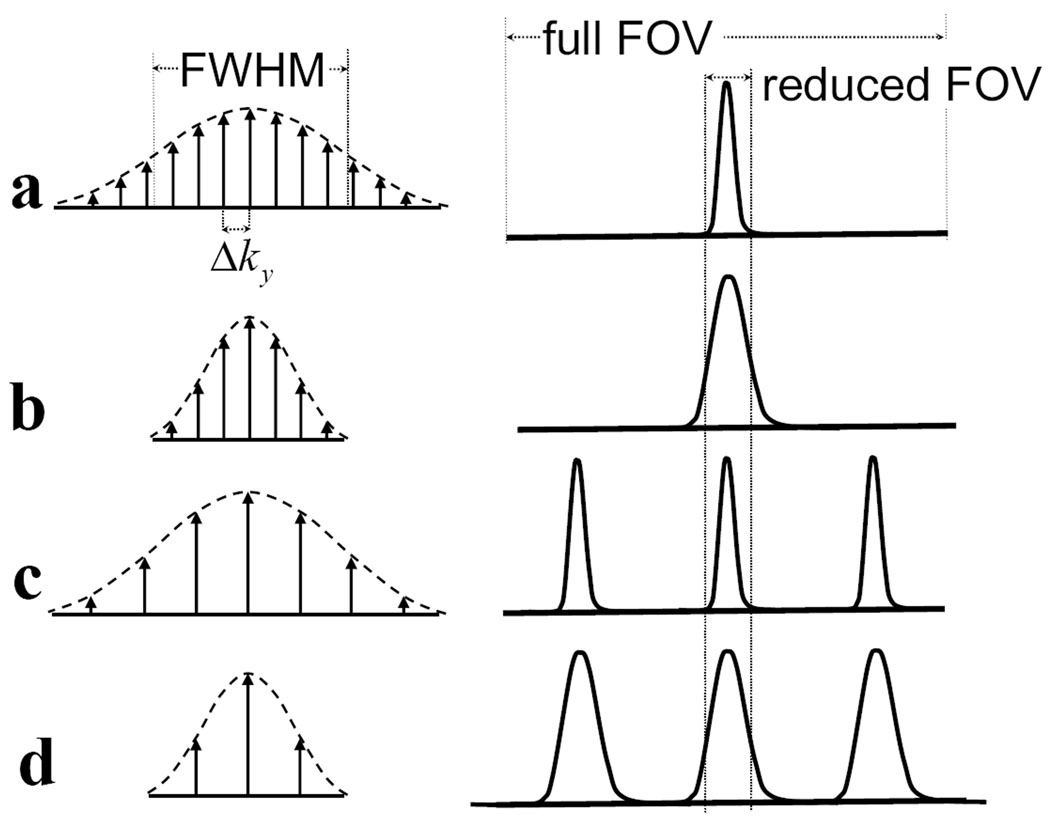Fig. 2.
2DRF excitation profiles depend on 2DRF-pulse parameters. The figures on the left represent 2DRF pulses with different timing parameters, and the figures on the right represent corresponding excitation profiles. Arrows under the dashed lines represent the amplitudes of subpulses, and dashed lines represent the Gaussian modulation envelop of the 2DRF pulses. a) 2DRF is composed of 13 subpulses, where the excitation k-space increment in phase encoding direction is Δky, and the Full-Width Half-Maximum of its modulation is FWHM. This long RF pulse excites one narrow lobe within the FOV with width proportional to 1/FWHM. b) RF pulse is shortened with sharper Gaussian modulation (cutting FWHM in half) and the same sampling density in excitation k-space (same Δky). The excitation profile of this pulse is twice the width of the lobe in a. Wraparound aliasing will result if the FOV is reduced as shown. c) With the same Gaussian modulation width as in a, but decreasing the sampling density in excitation k-space (increasing Δky), side lobes will be excited within the FOV. d) Changes are made to both Gaussian modulation and sampling density, thus the excitation lobes are wider and there are side excitation lobes within the FOV, resulting in severe aliasing artifact when reduced FOV images are acquired.

